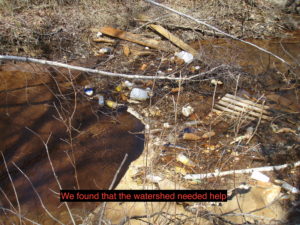What are watersheds?
Watersheds are areas of land that channels rainfall and snowmelt to streams, creeks, and rivers eventually to outflow areas such as oceans, bays, or reservoirs. These bodies of water supply our drinking water, water for agriculture and manufacturing, and hosts some of our favorite recreational actives such as canoeing or fishing.
Why We Need Clean and Healthy Watersheds
Watersheds play an important part in sustaining life. Various forms of pollution, including runoff and erosion, can interfere with the health of watersheds. They are important to everyone and everything that uses and depends on water. Watersheds can provide critical services such as clean drinking water, productive fisheries, and outdoor recreation that support our economies, environment, and quality of life.
What you can do to help
- Conserve water; take shorter showers, fix leaks, and turn off the water when not in use
- Don’t over apply fertilizers; go organic or use slow release fertilizers
- Pick up after your pets and dispose of waste properly
- Drive less; try walking or biking more
- Make an effort to teach others how they can conserve and help protect local watersheds
- Attend local clean ups/pick up any trash you may see along your way.

Facts and Figures
A national water quality survey of the nation’s rivers and streams showed that 55% of the nation’s flowing waters are in poor biological condition (U.S. EPA, 2013).
Nearly 40% of fish in North American freshwater streams, rivers, and lakes are found to be vulnerable, threatened, or endangered; nearly twice as many as were included on the imperiled list from a similar survey conducted in 1989 (Jelks et al., 2008).




